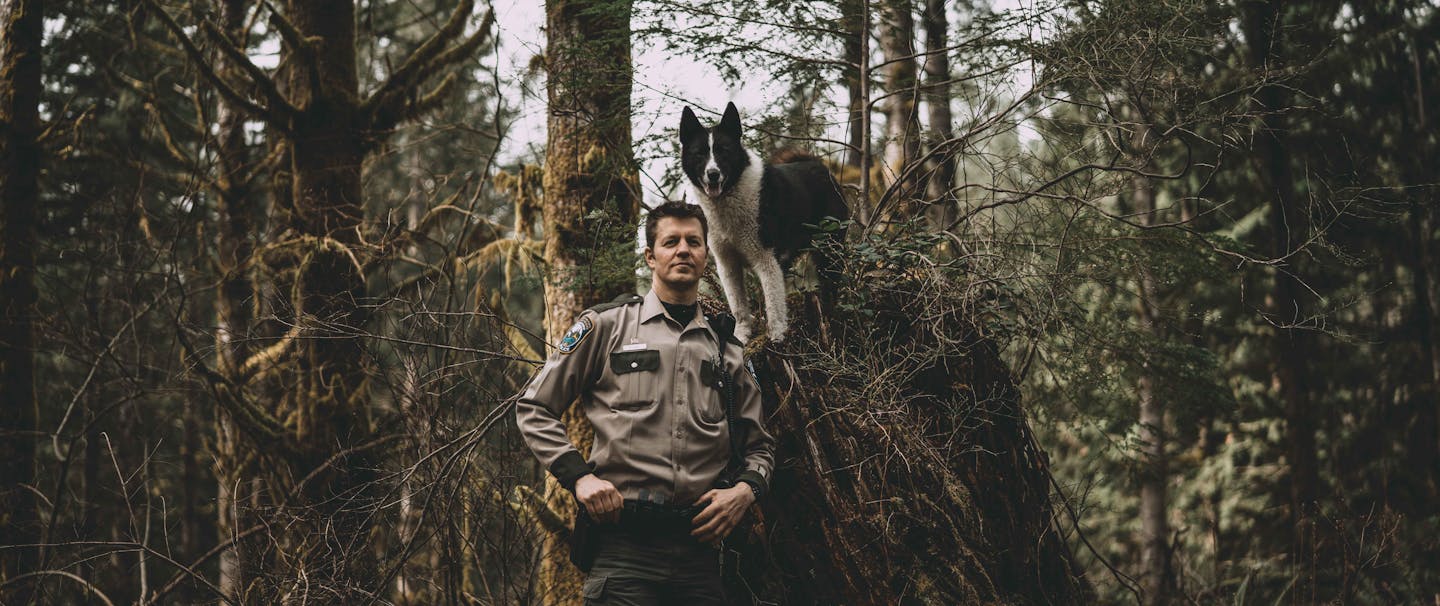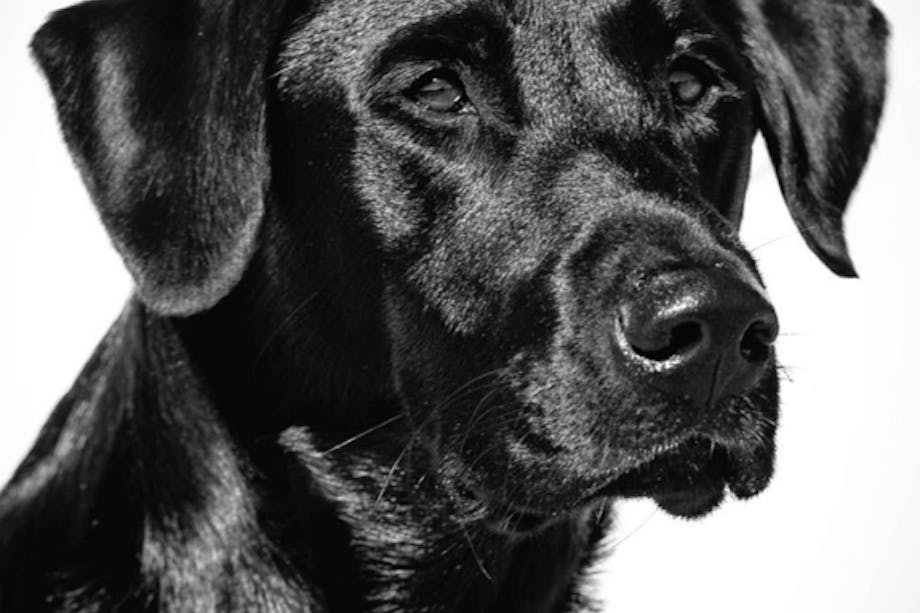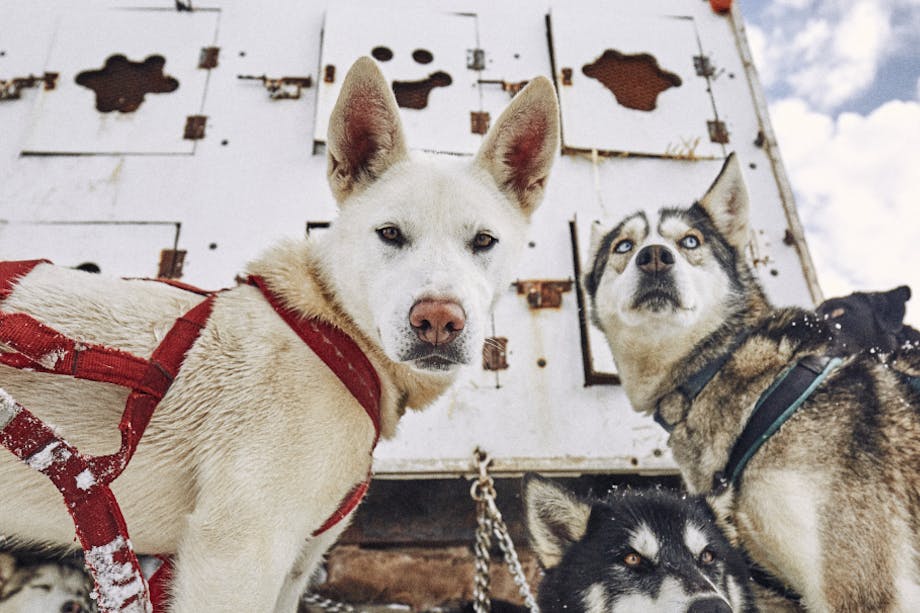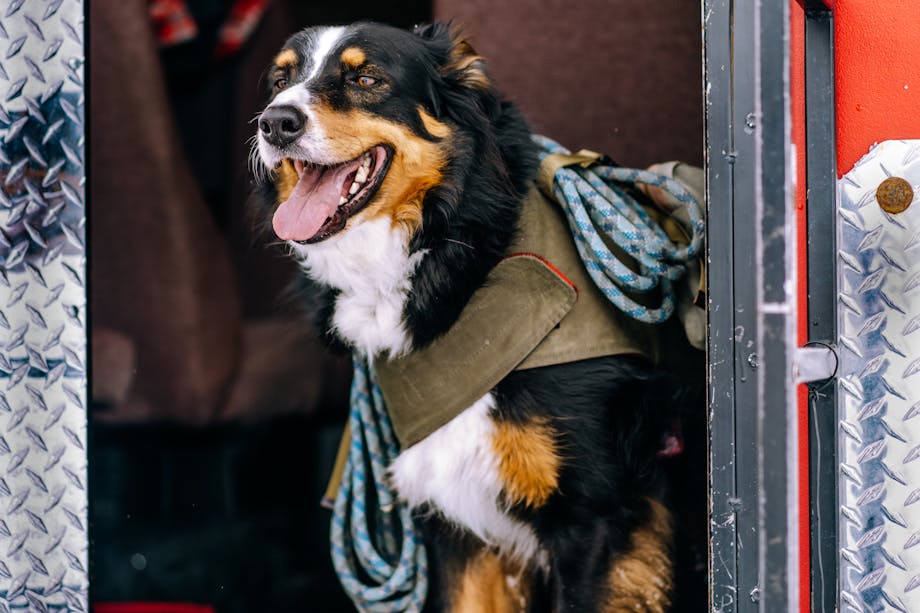Washington State’s Karelian Bear Dog Program is in Jeopardy.
In 2003, when the Washington State Department of Fish and Wildlife launched their Karelian Bear Dog Program (KBDP) with one dog, Mishka, it was viewed as an anomaly, an outlier, a longshot that would probably fail. Yet it didn’t. Instead, it was successful and quickly became a poster child for outside-the-box thinking in controlling wildlife predators’ interactions with a continually expanding human populace. Organizations from as far away as Japan and as close as California reached out for advice on establishing like-minded buffers. The furry-faced dogs and their handlers were featured across a wide array of media platforms, and the future of the privately funded program seemed bright until it wasn’t.
a better way to mitigate non-lethal interactions between humans and bears: An ancient breed of hunting dogs, Karelian’s have been used by Finnish hunters for centuries to hunt large animals such as bears and elk
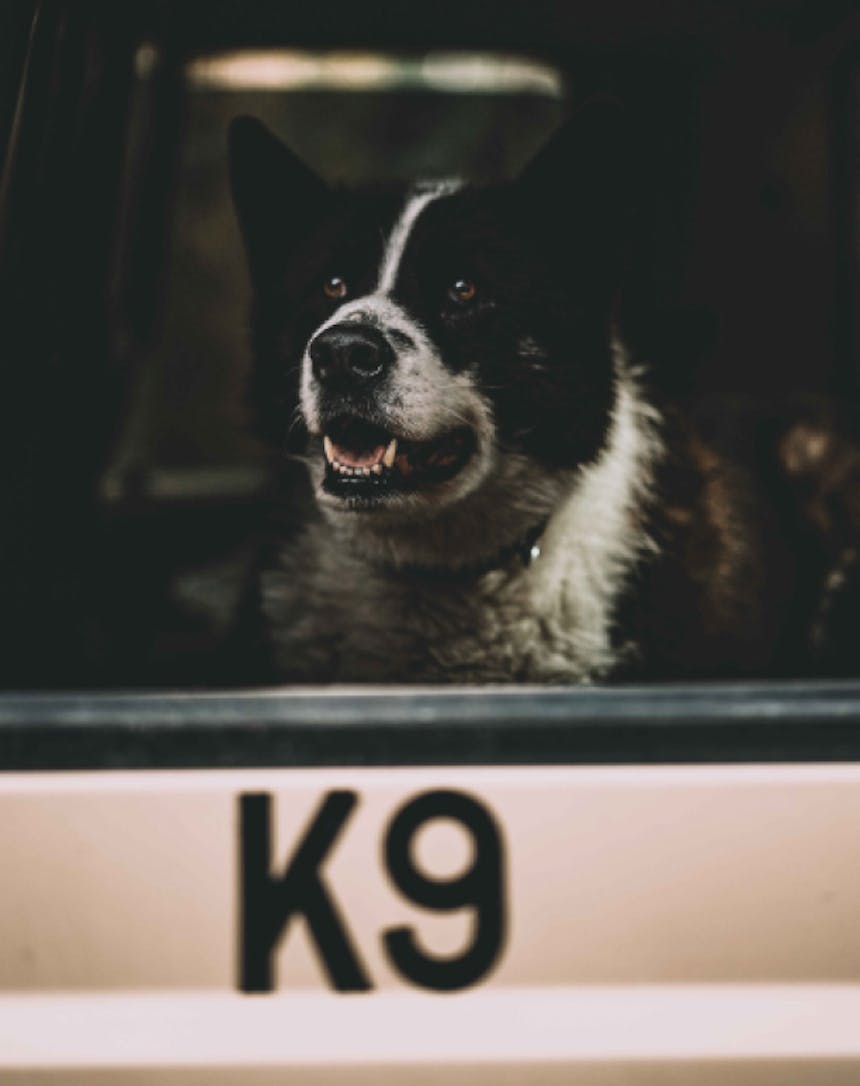
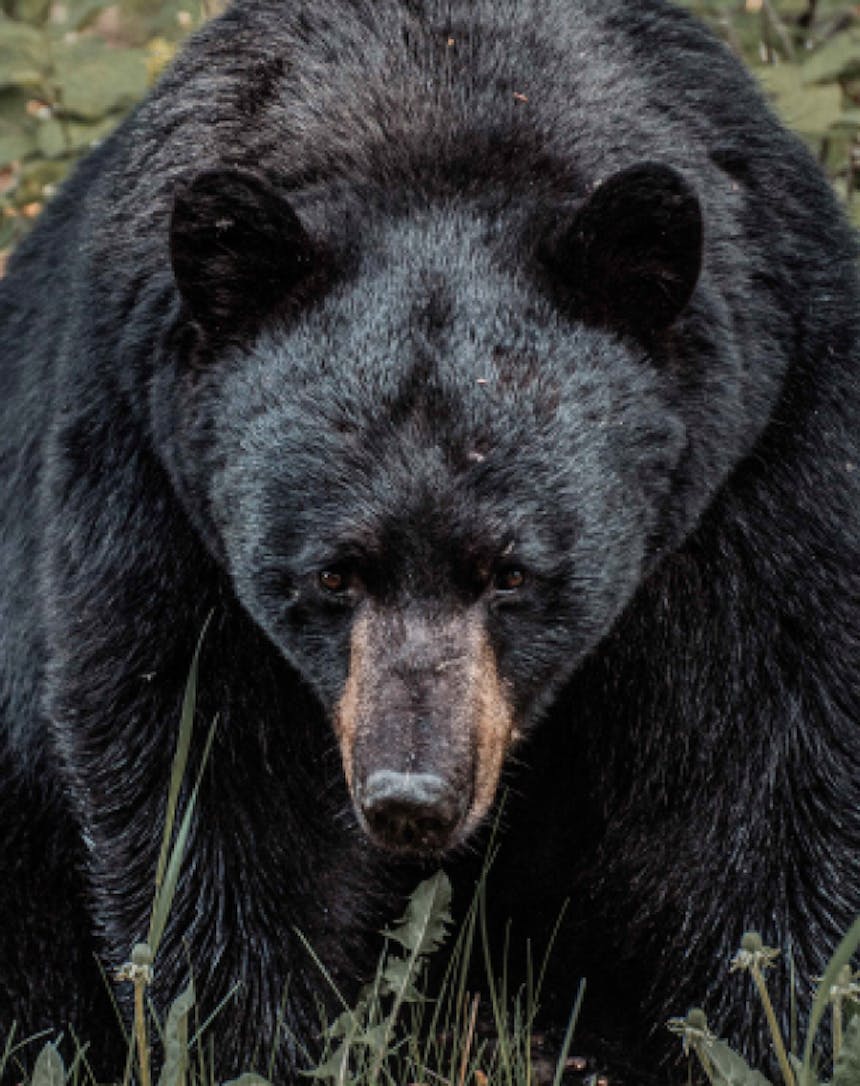
Colter (retired)
These days those involved in the program openly worry if the end is in sight as the state has changed direction and the dogs are used less and less these days. Something many fear will lead to more wildlife deaths.
The idea of using a dog that traditionally hunted the exact animals it would be protecting was first introduced to the WDFW by bear biologist Carrie Hunt. The founder of Wind River Bear Institute, she was one of the first to realize a better way to mitigate non-lethal interactions between humans and bears. An ancient breed of hunting dogs, Karelian’s have been used by Finnish hunters for centuries to hunt large animals such as bears, elk, and moose. A highly energetic and intelligent dog, they would spend hours circling their prey to isolate them so that hunters could then successfully bring down their game. These traits made them ideal partners for several Fish and Wildlife officers and biologists looking for another way to do their jobs.
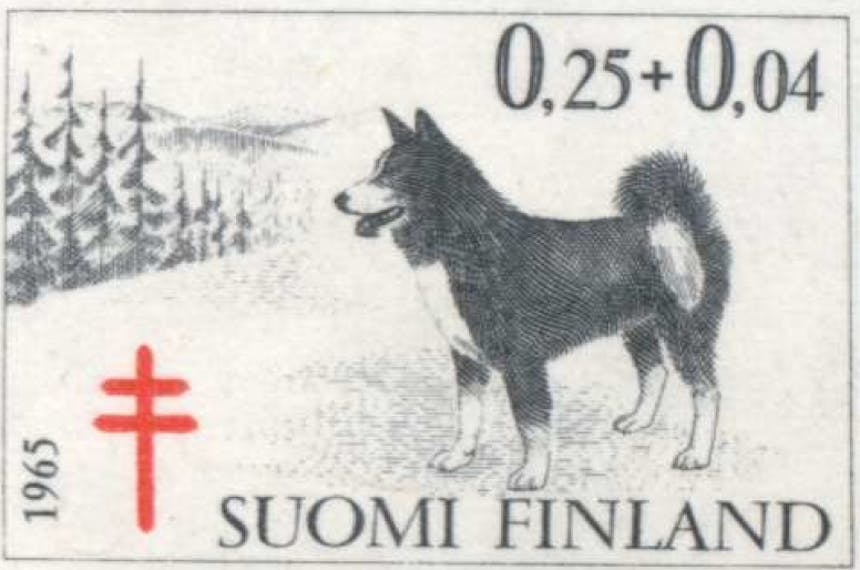
Owning a Karelian is a full-time job. The dog lives with their handlers and spend long days with them as they patrol their respective districts. The handlers that decided to enter the program did it from a deep-seated passion for protecting the resources they were entrusted with watching over. “We got really tired of needlessly killing bears all the time, just because 99% of all our bear and mountain lion conflicts are human-caused and could have been easily prevented,” says Officer Nick Jorg, the handler Freyja (active) and Colter (retired). “It was heartbreaking to be killing them all the time.”
"We got really tired of needlessly killing bears all the time, just because 99% of all our bear and mountain lion conflicts are human-caused and could have been easily prevented”
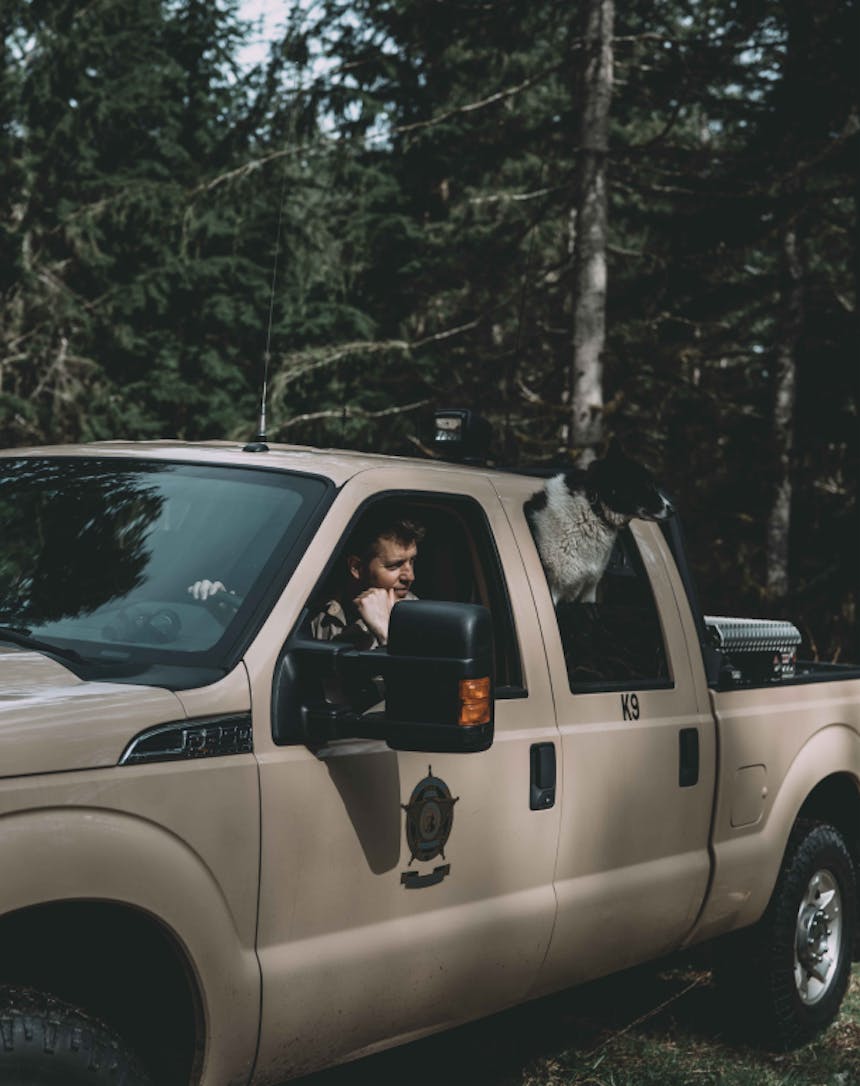
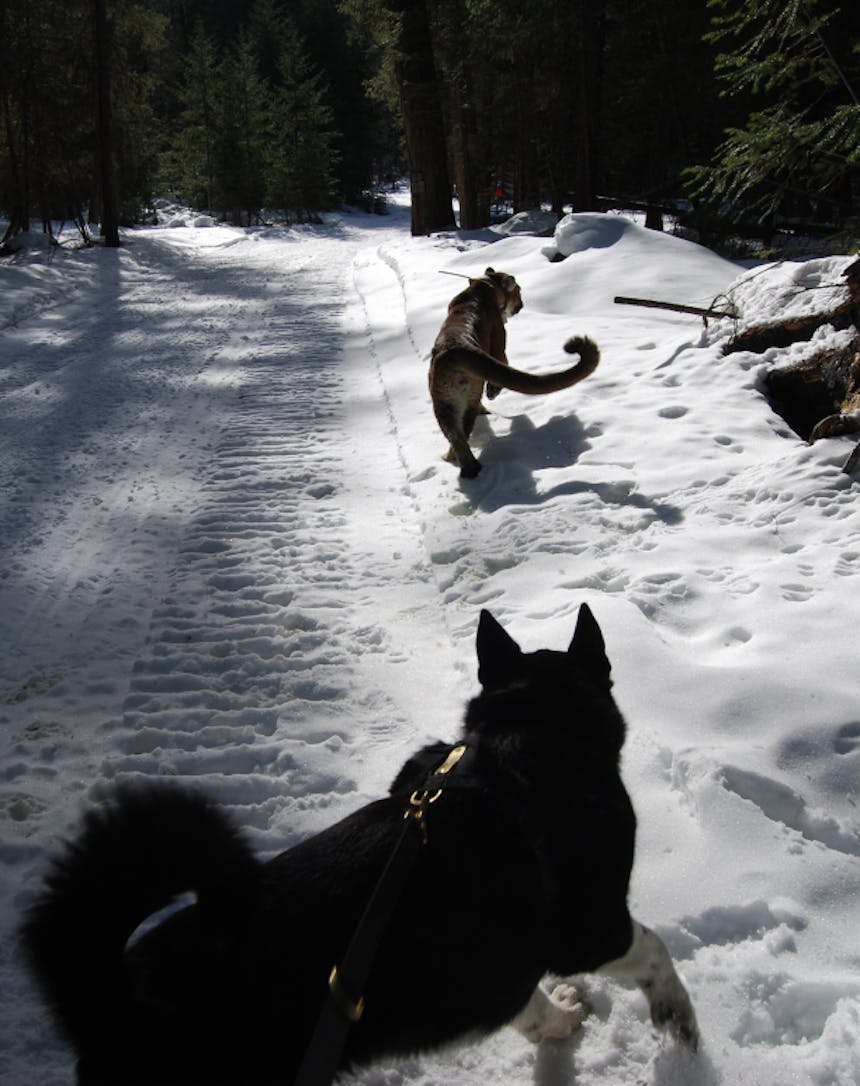
By 2012 the program had seven active dogs. They were continually working in the field both as deterrents and as valuable PR tools for the department. Most people are drawn to the furry black and white dogs with their ever-eager eyes and focused demeanors. They would visit schools, parks, and work the WDFW booth at the Washington State Fair and Puyallup Fair. While people met them, the officers would educate them about how they could mitigate the dangers that humans pose to the 20,000 bears estimated to live in the state.
This ability to connect with the public helped the program succeed the most, says Rich Beausoleil, the Bear & Cougar Specialist with the WDFW. As the handler of Cash, one of the first dogs in the program who passed in 2018, and Indy, who is ten years old and still active. “The dogs allow us time to work with people to adapt their behavior (putting away easy food sources) to ensure that a bear doesn’t come back once we leave,” he says. “Many people don’t want to talk to an officer, but as soon as they see the dogs and realize that we are there to help, they start to open up. Soon enough, we are talking to their neighbors and hopefully making some lasting changes. But we have taken the KBDP in other directions that no other agency has, such as partnering with the dogs to finding injured and orphaned wildlife, making captures for research and population estimation, finding poached animals, hazing bighorn sheep off the highway in winter, and pushing moose away from developed areas, that’s a lot of added value”
While their public facing is helpful, another crucial part of the dog’s job was to impart a message to a bear or mountain lion to leave an area. Working with an officer who would launch fire cracker shells into the air and yell, the dogs would rapidly drive the animal away from a spot. The idea is to send a message to the creature that something unpleasant exists there and that they should leave and hopefully never come back. That coupled with the behavior changes by landowners to put up livestock feed, bird feeders, and garbage meant that negative interactions would be prevented in the future, something that could help create a long-term solution.
By not killing or relocating animals involved in Bear-human conflict, they ensured stability in the wildlife communities’ social structures. Relocated animals often didn’t survive due to competition from other bears in whose range they had been released into, plus many were struck by autos trying to return to their home territory. The voids they left behind were quickly filled with other bears, often leading to deaths there too as they fought for control.
“I would guess in our program we have prevented the unnecessary deaths of probably close to a thousand bears. Plus, they have helped us catch a lot of poachers, too, which has also contributed to wildlife success,”
Unfortunately, those involved in the program have said that there has been a shift in department policies over the last few years. The program falls under the law enforcement wing of the WDFW and has seen its leadership changed several times since the KBDP was launched. While each new chief has supported it, they each have their own viewpoint for running their department. The latest, Chief Steve Bear, is no different.
“Chief Bear is a supporter of the program, but he thinks that the KBDP should fall under Wildlife Control run by the science side of the WDFW and not under the Law Enforcement side,” says Captain Alan Myers, the KBD Program Manager. “It’s tough to find new handlers since they don’t fall under the state’s K-9 program and as such don’t get the same compensation as those officers do. We are in a tough spot right now.”
One of the biggest complaints that the handlers who have dedicated years to the KBDP have is that the pipeline for new dogs is drying up. Nowadays, three active dogs are stationed throughout the state with no plans to bring any new ones on. Plus, they are not being used for deterrence work much anymore. Instead, problem animals are being euthanized more than in the past. The officers are working a bit with the dogs helping the National Parks in the region with bear issues. Still, most days, the dogs just ride around with their handlers in their trucks, not out in the wild working. Something that seemed unthinkable just a few years ago.
“I would guess in our program we have prevented the unnecessary deaths of probably close to a thousand bears. Plus, they have helped us catch a lot of poachers, too, which has also contributed to wildlife success,” says Officer Jorg. “It’s, the only thing that I’ve personally seen in almost 25 years of working with bears that actually ever works on both the people side and the animal side that will actually save a bear’s life and help prevent future conflicts. I hope it will continue.”
